Have you ever thought about starting a hydroponic farm at home? If you’re interested in growing plants without soil, hydroponic farming may be for you. This post will explain everything needed about hydroponic farming at home, from how to start to what kit you need and what plants are best suited for home hydroponics.
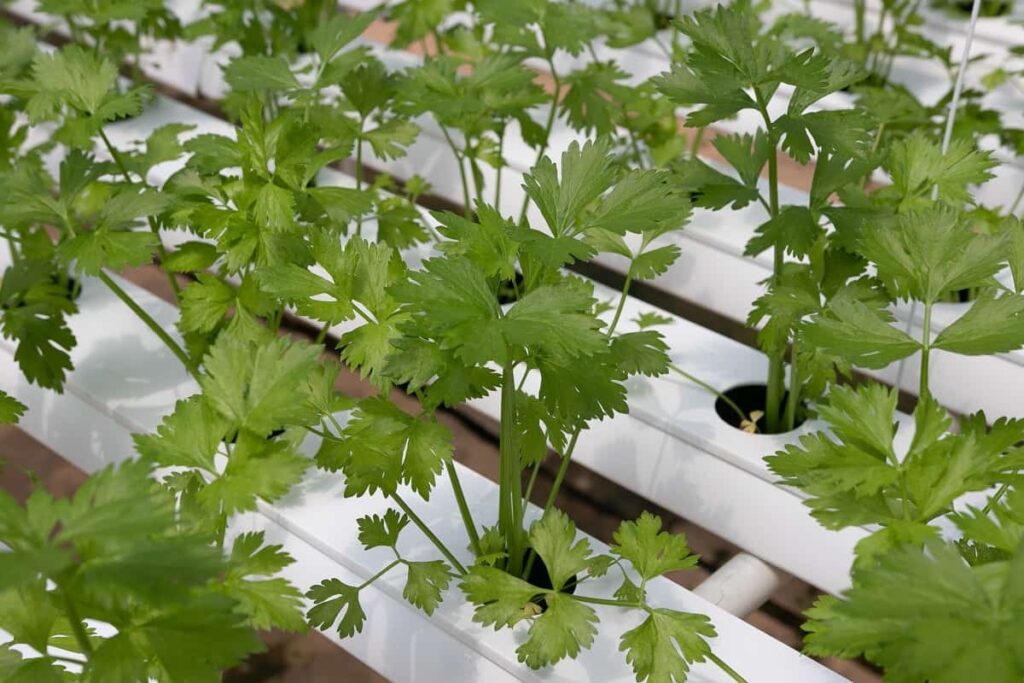
Hydroponic farming at home
What is hydroponic farming?
Hydroponic farming is a type of agriculture where plants are grown in a water-based nutrient solution without the use of soil. This farming method has many benefits, including growing crops in a controlled environment and using less water and fewer chemicals than traditional farming methods.
Can I do hydroponic farming at home?
Yes, you can do hydroponic farming at home! You will need to purchase a hydroponic kit, which you can easily find online or at your local garden center. The cost of a hydroponic kit will vary depending on the size and features you want. The best plants for home hydroponics are lettuce, tomatoes, peppers, and herbs.
Is hydroponics better than soil?
There are many benefits to growing plants hydroponically rather than in soil. For one, hydroponics requires less water than soil-based gardening. This is because the roots of plants grown hydroponically are constantly bathed in nutrient-rich water, so they don’t need to search for food and water as they would in soil. Additionally, hydroponics allows you to control the pH and nutrients of the water, which can lead to healthier plants.
Soil can be unpredictable, and getting the perfect mix of nutrients for your plants can be difficult. With hydroponics, you can customize the nutrient solution to ensure your plants are getting exactly what they need. Finally, growing plants hydroponically eliminates the need for weeding. Weeds compete with your plants for resources like water and sunlight, so getting rid of them can help them thrive.
It would be challenging in the soil to remove all weeds without damaging your other plants. However, since hydroponic systems are closed-loop systems, there is no way for weeds to get in and take over. Overall, there are many reasons why hydroponics is better than soil-based gardening. Hydroponics is the way to go if you’re looking for a more efficient and controlled way to grow your plants.
In case you missed it: Farming Business Plan PDF: for Poultry, Livestock, Agriculture, Horticulture, Greenhouse, and Hydroponic
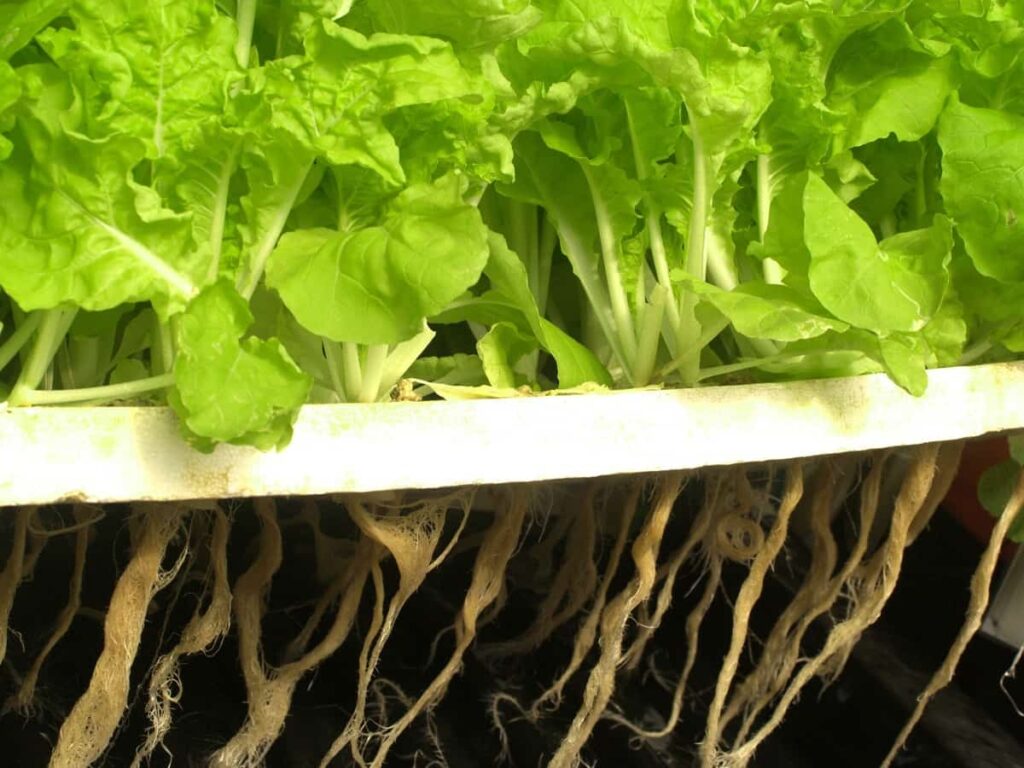
Hydroponics setup cost at home
Hydroponics is a soil-less method of growing plants in which water and nutrients are applied directly to the plant’s roots. Hydroponics is an excellent way to grow plants at home, as it requires less space than traditional gardening and can be done indoors or outdoors. The cost of setting up hydroponics at home will depend on the size and type of system you choose. A small, simple system can be set up for as little as $100, while a larger, more complex system can cost several thousand dollars.
The best option to determine the cost of your hydroponics setup is to consult a professional hydroponics retailer or online resource. Once you have determined the cost of your hydroponics setup, you will need to purchase the necessary equipment. The most important equipment for a hydroponics system is the grow light, which provides light for the plants. You can purchase grow lights at most hardware stores or online retailers.
Other necessary equipment includes a water pump, air pump, growing media (such as gravel or clay pellets), and plant food. After your hydroponics system is set up, you must add plants. Many different plants can be grown using hydroponics, but some are better suited for this method than others. Some of the best plants for home hydroponics include tomatoes, cucumbers, lettuce, and herbs.
How to setup hydroponics at home
Hydroponic farming is a great way to grow plants home with little hassle. All you need is a hydroponics kit, some basic materials, and some plants. Here are quick steps on how to set up your hydroponics at home:
- 1. Choose a hydroponics kit that fits your needs. Many different types of kits are available on the market, so research before making a purchase.
- 2. Assemble your kit according to the instructions provided. This should be relatively easy to do, but plenty of online resources and videos can help you out if you have any trouble.
- 3. Fill your reservoir with water and nutrients according to the manufacturer’s instructions. Again, this is a straightforward process but follow the instructions carefully to ensure optimal results.
- 4. Plant your chosen plants in the growing medium and place them under the grow lights. Make sure to keep an eye on them and provide them with the necessary care (watering, fertilizing, etc.) according to their needs.
You can easily set up hydroponics at home and start growing healthy plants with just a few simple steps!
Hydroponic farming kit for home
A home hydroponic farming kit is a great way to get started with hydroponic gardening. These kits contain everything you need to start, including a growing system, nutrient solution, and grow lights. They are very easy to set up and use and would be a great way to learn about hydroponic gardening. There are few important things to consider when choosing a home hydroponic farming kit.
First, you must decide what system you want to use. There are two main types of systems: active and passive. Active systems require pumps and timers to circulate the nutrient solution and provide aeration for the roots. Passive systems rely on gravity to circulate the solution and do not require additional equipment. Second, you need to decide what size system you need. Home hydroponic kits come in various sizes, from small tabletop units to larger floor-standing models.
In case you missed it: Vertical Hydroponic Farming: A Growing Trend In Urban Agriculture
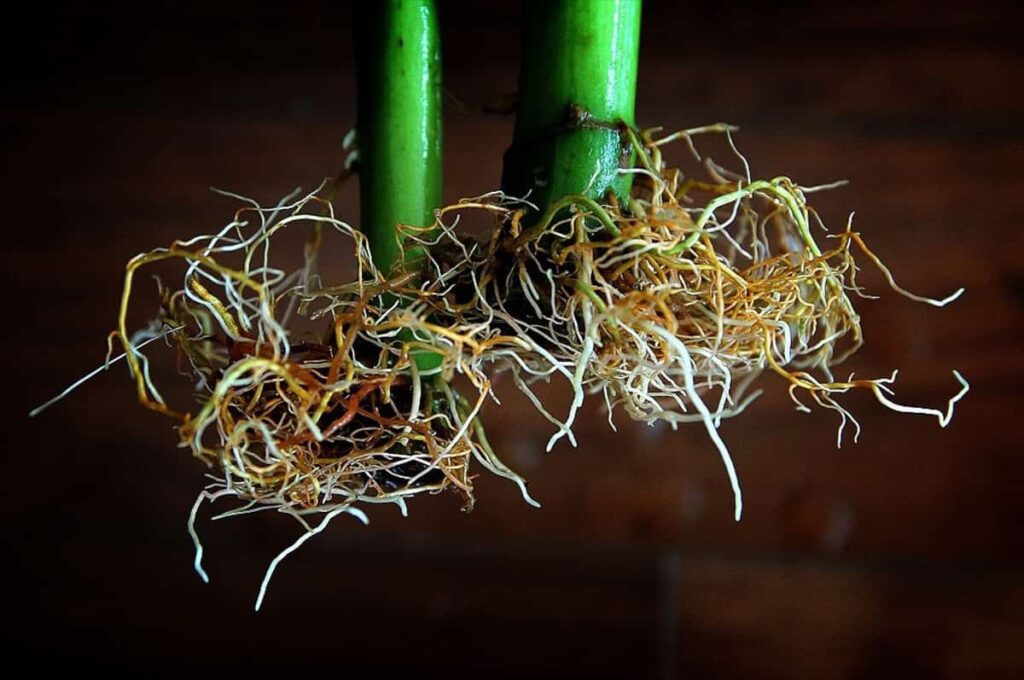
Choose a right size of hydroponic kit that fits in the space you have available at your home. Finally, it would help if you choose what plants you want to grow. Many home hydroponic kits provide instructions or suggestions for what plants do well in hydroponics. Some common plants that are grown in hydroponics include tomatoes, cucumbers, lettuce, and herbs. You can also grow flowers in a home hydroponic system.
How many nutrients do I need for hydroponics?
There are certain things to consider when it comes to the requirement of hydroponic nutrients for your plants. The type of plants you’re growing, the size of your system, and the climate you’re growing in will all affect how much nutrients your plants need. The best way to determine how much nutrients your plants need is to talk to a local hydroponic expert or do some online research. There are many resources available that can help you figure out how much nutrients your specific plants will need.
Once you’ve determined how much nutrients your plants need, you’ll need to find a solution that meets those needs. You can purchase nutrient solutions from most hydroponic retailers or online. Make sure to follow the directions on the nutrient solution carefully, so you don’t over or under-fertilize your plants.
How long do hydroponic nutrients last?
Hydroponic nutrients are usually added to the water used in hydroponic systems. Usually, hydroponic nutrients last from a few weeks to a few months before they need to be replaced. However, the specific time frame depends on the type of hydroponic system, the plants being grown, and the environment in which the system is located.
What is the cheapest way to start hydroponics?
There are a few ways to start hydroponics on a budget. One way is to purchase a kit. There are many different types of hydroponic kits available, and their price will depend on the size and features of the kit. Another way to start hydroponics on a budget is to build your system. This can be done with some basic materials at a local hardware store. Finally, the cost of starting hydroponics depends on the plants you want to grow and the size of the system. Some plants are more difficult to grow than others and require more expensive equipment.
Which is the most profitable crop in hydroponics?
There is no direct and definitive answer to this question as it will depend on many factors, including the type of hydroponic system you are using, the climate you are growing in, and your personal preferences. However, some of the most popular crops grown in hydroponics include tomatoes, cucumbers, lettuce, and herbs. These crops can be very profitable when grown hydroponically, especially if you can sell them at a premium price.
What are three issues that occur in hydroponic systems?
A few issues can occur when growing plants hydroponically at home. These issues include:
- pH levels that are too high or too low.
- Pests or diseases affect the plants.
- Nutrient deficiencies in the plants.
If any of these issues occur, it is important to take corrective measures immediately to prevent further damage to the plants.
Can you grow hydroponics without a pump?
You can technically grow hydroponics without a pump, but it is extremely difficult and not recommended. A pump is necessary to circulate the nutrient-rich water solution to the plants. Without a pump, you would need to constantly manually move the water around, which is time-consuming and difficult to do evenly.
Do hydroponic plants need electricity?
Hydroponic plants do not need electricity to grow; however, some hydroponic systems require a pump to circulate the nutrient solution, and these pumps typically need electricity. Additionally, many growers use grow lights to supplement the sunlight their plants would receive if grown in soil. While growing solar panels can power lights, most indoor growers rely on electricity to power their grow lights.
In case you missed it: High Yield Hybrid Banana Varieties in India: State Wise Guide
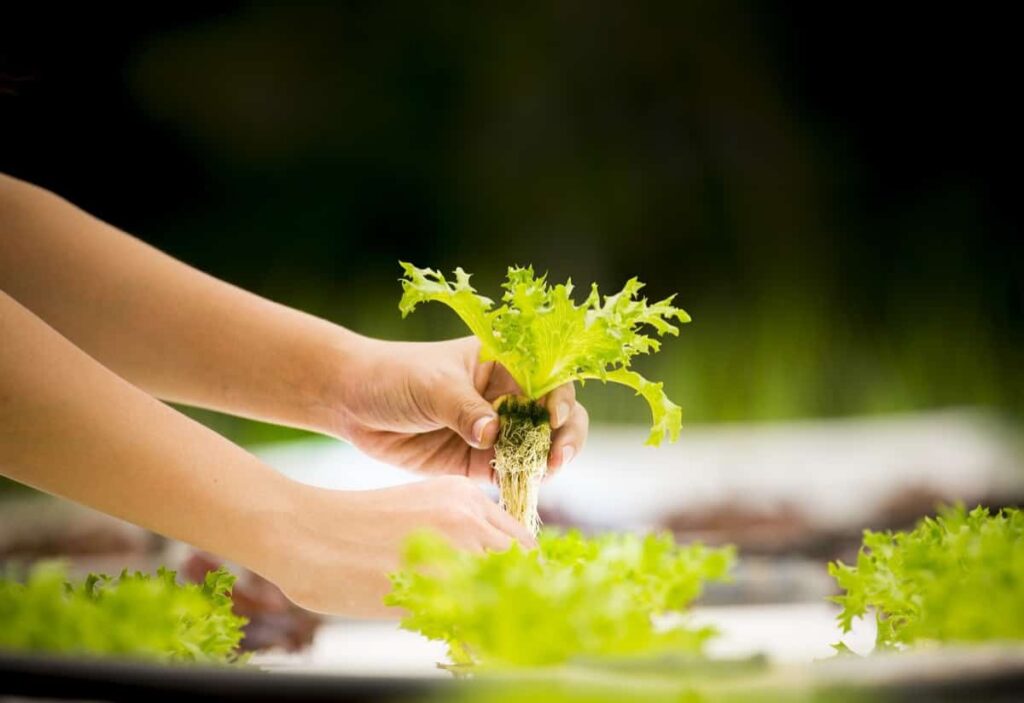
Does hydroponics need sunlight?
To answer whether hydroponics needs sunlight, we must first understand what hydroponics is. Hydroponics is a system in which plants are grown in water without soil. Instead, the plants are suspended in a nutrient-rich solution and are provided with light, water, and air. While some argue that hydroponics does not need sunlight because the plants are provided with all the nutrients they need, others argue that sunlight is necessary for the growth of healthy plants.
Sunlight provides the energy needed for photosynthesis, which is essential for plant growth. So, does hydroponics need sunlight? Unfortunately, the answer is yes and no. While hydroponic plants can grow without sunlight, they will not be as healthy or thrive as plants grown in sunlight.
Which is the most profitable crop in hydroponics?
Some of the most popular crops grown in hydroponics include tomatoes, cucumbers, lettuce, and herbs. These can all be sold at a premium price since they’re generally considered higher quality than conventionally-grown crops. Finally, how efficiently you grow your crops will also affect your profitability.
If you’re able to produce a high yield with a low input of resources (water, electricity, etc.), then you’ll be more profitable than someone who isn’t as efficient. So, which is the most profitable crop in hydroponics? It depends on all of these factors. If you want to maximize your profits, it’s important to research and figure it out.
Do you need fertilizer for hydroponics?
While you do not need fertilizer for hydroponics, some growers choose to use it to give their plants an extra boost. Fertilizers can help your plants grow faster and produce more fruit or flowers. If you decide to use fertilizer, be sure to choose one that is specifically designed and suited for hydroponics. Some general-purpose fertilizers can harm your plants.
Is hydroponic growing faster than soil?
Hydroponic growing is often faster than soil growing because plants grown in water have access to a more consistent supply of nutrients and moisture. They also don’t have to contend with soil-borne pests and diseases. However, hydroponic systems can be more expensive to set up and maintain than soil gardens, requiring more attention to detail.
Does hydroponic food taste different?
Hydroponic food does not taste different from traditionally grown food. The main difference is how the plants are grown. Hydroponically grown plants are typically grown in a water and nutrient solution without the use of soil. This allows for a more controlled environment, leading to healthier plants and higher yields.
What is the fastest-growing plant in hydroponics?
The best plants for home hydroponics are typically fast-growing vegetables or herbs such as lettuce, spinach, tomatoes, and cucumbers. These plants do well in various hydroponic systems and can produce high yields with minimal effort.
In case you missed it: High Yield Hybrid Lemon Varieties in India

How often do I change hydroponic water?
Changing your hydroponic water depends on some factors, including the type of system you’re using, the plants you’re growing, and the environment in which your system is located. Generally speaking, most hydroponic systems will need to have their water changed at least once a week. However, more frequent changes may be necessary for hot or humid climates or if you’re growing plants that are particularly sensitive to environmental conditions.
What fruit can grow in hydroponics?
Many different fruits can be grown in hydroponics, but some of the most popular include tomatoes, cucumbers, strawberries, and watermelons. Each of these fruits has different requirements regarding hydroponic setup and nutrients, so be sure to research before you start. With hydroponic farming, you can enjoy fresh fruit all year long – no matter what the weather condition is like outside!
Why is my hydroponic water turning green?
The most common reason hydroponic water turns green is algae growth. Algae can grow in water but thrive in nutrient-rich environments like hydroponic systems. Green algae are not harmful to plants but can clog up your system and make it difficult for roots to get the oxygen they need. To prevent algae growth, keep your system clean and free of organic matter that can provide food for algae. Additionally, you can use an algaecide to kill existing algae growth.
Can you transfer plants from soil to hydroponics?
If you’re considering starting a hydroponic farm at home, you might wonder if you can transfer plants from soil to hydroponics. The answer is yes! You can transfer plants from soil to hydroponics in a few different ways. One way to transfer plants from soil to hydroponics is to transplant them into your hydroponic system. This can be done by carefully removing the plant from pots/containers of soil, making sure not to damage the roots, and then transplanting it into your hydroponic system.
Another way to transfer plants from soil to hydroponics is to take cuttings from plants already growing in soil. To do this, take a sharp knife or pair of scissors and cut a 4 to 6-inch section of stem from the plant. Make sure several leaves are on the cutting, then place the cutting in water. Once the cutting has rooted (which can take a week or two), you can transplant it into your hydroponic system.
Finally, you can also start plants from seeds in your hydroponic system. This is generally the easiest way to start hydroponics, as you don’t have to worry about transferring plants or taking cuttings. Instead, sow your seeds in your desired medium (such as coco coir or Rockwool), providing them with the proper nutrients and light.
What are the best vegetables for hydroponics?
Hydroponic farming is a great way to grow fresh vegetables at home. The best vegetables for hydroponics are leafy greens, such as lettuce, spinach, and kale. These leafy greens will grow well in a hydroponic system with little care or attention. Other great vegetables for hydroponics include tomatoes, cucumbers, and peppers. Again, these vegetables will all do well in a hydroponic system with the proper care and attention.
Is hydroponic better than organic?
The debate over whether hydroponic or organic farming is better has been around for years. There are advantages and disadvantages to both methods of growing plants. It comes down to what you, the grower, are looking for in terms of results. Hydroponic systems can be more controlled than organic systems, meaning that you, as the grower have more influence over things like temperature, water quality, and nutrient levels.
This can lead to bigger and healthier plants and a higher yield. However, hydroponic systems can be expensive to set up and maintain on a large scale, and they require a fair amount of knowledge and experience to get right. Organic systems rely on natural processes to provide nutrients for plants. This means they can be less expensive and easier to set up than hydroponic systems.
However, organic systems can be less predictable and harder to control than hydroponics, meaning that you may get different plant sizes and yield results. So which is better? Hydroponic or Organic? Ultimately, the answer depends on what you, as the grower, are looking for. Hydroponics may be the way to go if you want larger plants with a guaranteed yield. On the other hand, organic might be a better option if you’re looking for an easier and less expensive system.
Why are my hydroponic plants dying?
If you’re new to hydroponic gardening, you may wonder why your plants are dying. There are a few common reasons why hydroponic plants may die:
- Insufficient nutrients: Hydroponic plants need a nutrient-rich solution to thrive. If your plants are not getting enough nutrients, they will eventually die.
- Incorrect pH level: The pH level of your hydroponic solution needs to be carefully balanced. Your plants will die if the pH level of the solution is too high or too low.
- Too much or too little water: Hydroponic plants must be moist but not waterlogged. If your plants get too much or too little water, they will die.
- Too much heat or cold: Hydroponic plants need a consistent temperature to thrive. Your plants will die if the system temperature is too high or too low.
How many times a day should I water hydroponics?
If you’re growing hydroponically, you’ll need to water your plants more often than in soil. How often you’ll need to water depends on a few factors, including the size of your plants, the type of hydroponic system you’re using, the temperature and humidity of your hydroponic grow room, and how much light your plants are getting. Most hydroponic plants are required to water once or twice daily.
In case you missed it: Farming Business Plan PDF: for Poultry, Livestock, Agriculture, Horticulture, Greenhouse, and Hydroponic
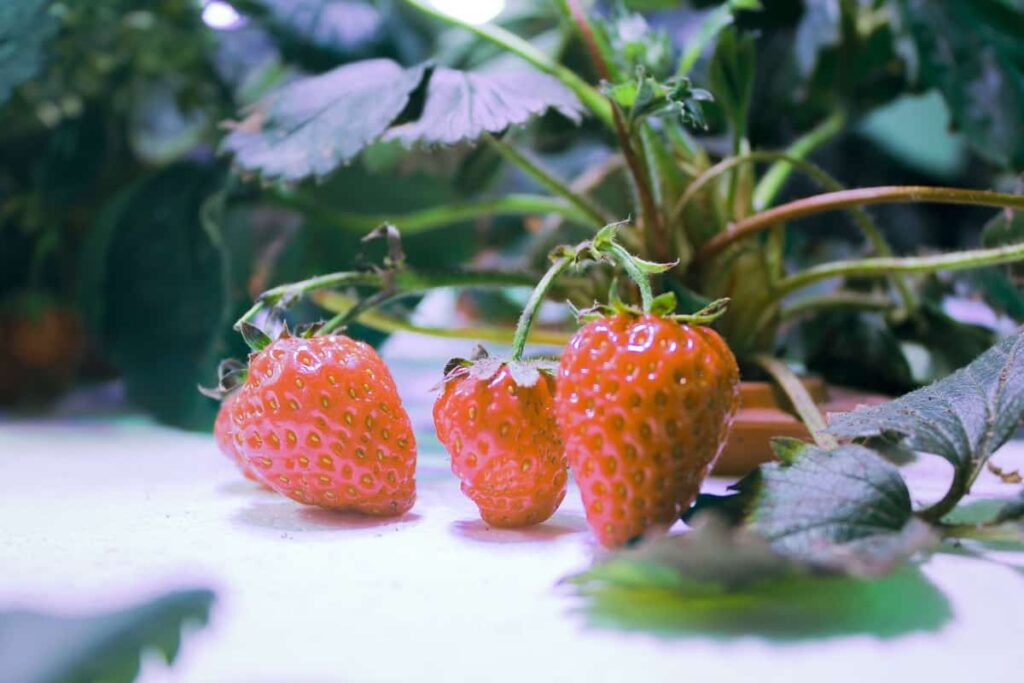
In case of using a deep water culture (DWC) system, you may only need to water once a day. If you’re using a drip irrigation system, you may need to water multiple times a day. To determine how often to water your plants, check the moisture level of the growing medium daily. If it feels dry to the touch, it’s time to water. Always test the moisture level before watering, as overwatering can be as damaging as underwatering.
Can you use tap water in hydroponics?
Yes, you can use tap water for hydroponics, but it is not recommended. The main reason is that tap water contains chlorine and other chemicals that can harm plants. If you use tap water, it is important to let it sit for one day before using it on your plants. This time will allow the chlorine to evaporate out of the water.
What is the easiest plant to grow in hydroponics?
The best plants for home hydroponics are those that grow well in small spaces and don’t require a lot of attention. Some good choices include lettuce, herbs, tomatoes, and peppers.
- Budget Friendly Sheep Shed Ideas: Cheap and Low-Cost Tips
- How Much Do Cattle Farmers Make: Revenue Streams in Cattle Farming
- Management Pests and Diseases in Your Cotton Field
- Sheep Farming Business Plan for Beginners
- Aquaponic Farming at Home: A Step-By-Step Guide
- Profitable Village Farming Business Ideas in 2024
- High-Yield Aquaculture: Fast-Growing Fish for Farming
- Effective Fish Pond Construction Techniques for Beginners
- Irrigation and Water Management in Pineapple Farming
- Blossom to Harvest: Mastering Flowering and Pollination in Papaya Farming
- Pig Fattening Essentials: From Selection to Sale for Beginners
- Raising Wagyu Cattle: A Complete Guide for Premium Beef Production
- Soil Types and Their Water Holding Capacity
- Optimizing Irrigation Schedules for Coconut Groves for Enhanced Yield
- Espresso Your Garden: Coffee Grounds for Healthier Acid-Loving Plants
- The Best Soil Mix for Snake Plants: How to Mix Your Own Snake Plant Soil
- Green Thumb Success: Expert Tips for Cultivating Greenhouse Beans All Year Round
- Bloom All Year Round: The Ultimate Guide to Indoor Hyacinth Care
- Eco-Friendly Gardening: How to Make Liquid Fertilizer from Kitchen Waste
- Ultimate Guide to Grow Anise in Pots: Explore Seed Propagation to Harvesting
- Guide to Raising Chester White Pigs: Discover Breed Facts to Growth Management
- Mastering the Elegance: The Ultimate Guide to Weeping Cherry Tree Care, Planting, and Maintenance
- Ultimate Guide to Planting Garlic in Grow Bags: Growing Strategies for Beginners
- How to Fix Spider Plant Leaf-Related Problems: Natural and Organic Remedies
- 10 Reasons Why Your Tulsi Plant is Shedding Leaves: Home Remedies and Solutions
- Optimizing Growth and Yield: The Advantages of Palm Bunch Ash Fertilizer
- Utilizing Neem Oil Extract as a Natural Pesticide for Hydrangea
- From Soil to Harvest: Various Ways in Which Farmers Can Use AI Tools
- Steps to Encourage and Induce Citrus Flowers: A Comprehensive Guide
- How to Fix Snake Plant Leaf-Related Issues: Natural and Organic Remedies
- Transform Your Garden into a Fragrant Oasis with Raat Ki Rani (Night Blooming Jasmine)
- Discover the Ideal Chicken Breeds for Philippine Farms
- How to Create a Poultry Egg Farm Business Plan for Profits
- Grow Lemon Cucumbers Like a Pro: Insider Techniques for Bountiful Yields
- Ultimate Guide to Caring for Your Pink Princess Philodendron: Tips for Thriving Variegation
- Areca Nut Profit Per Acre: Calculating Yield and Cost of Cultivation
